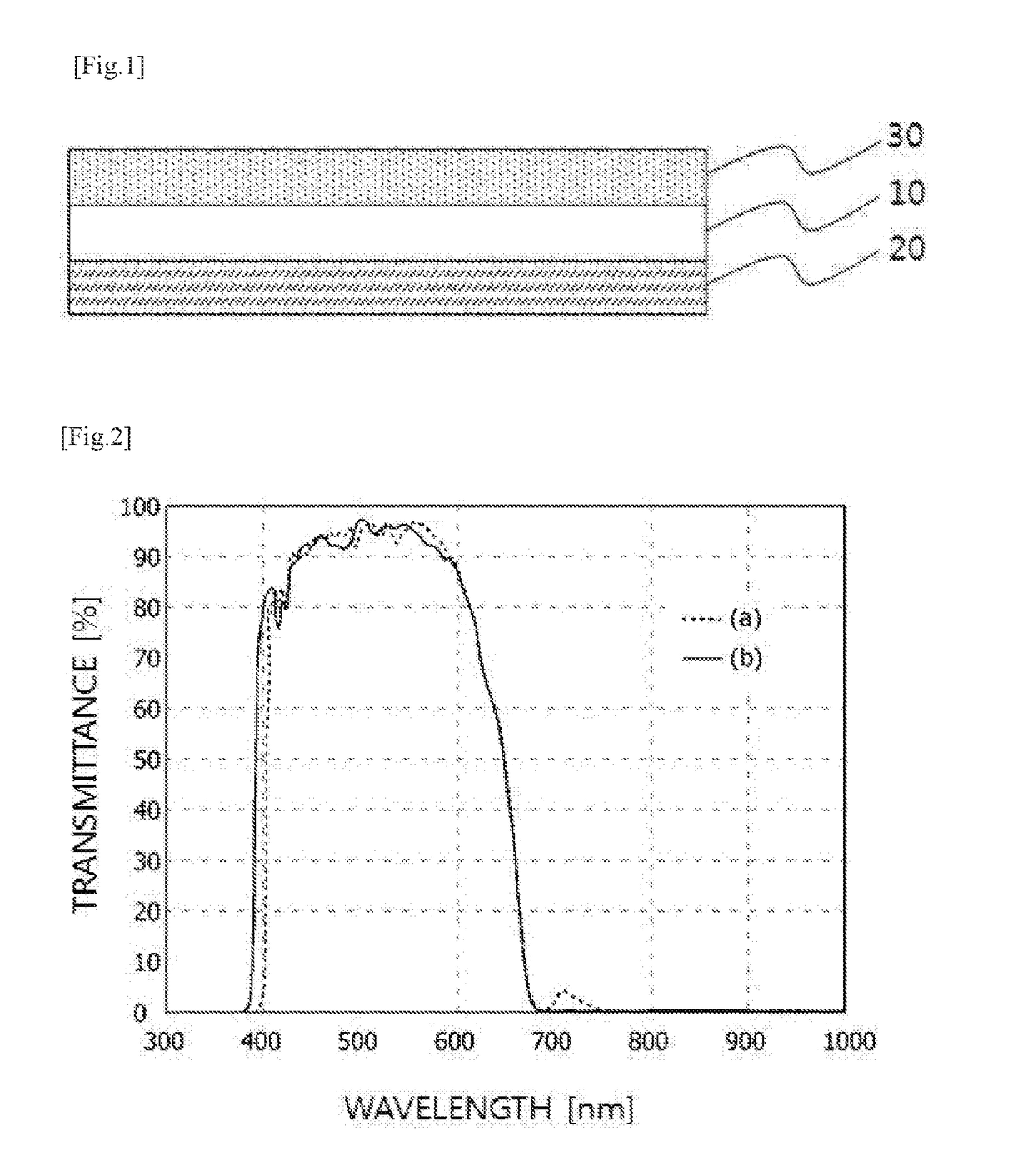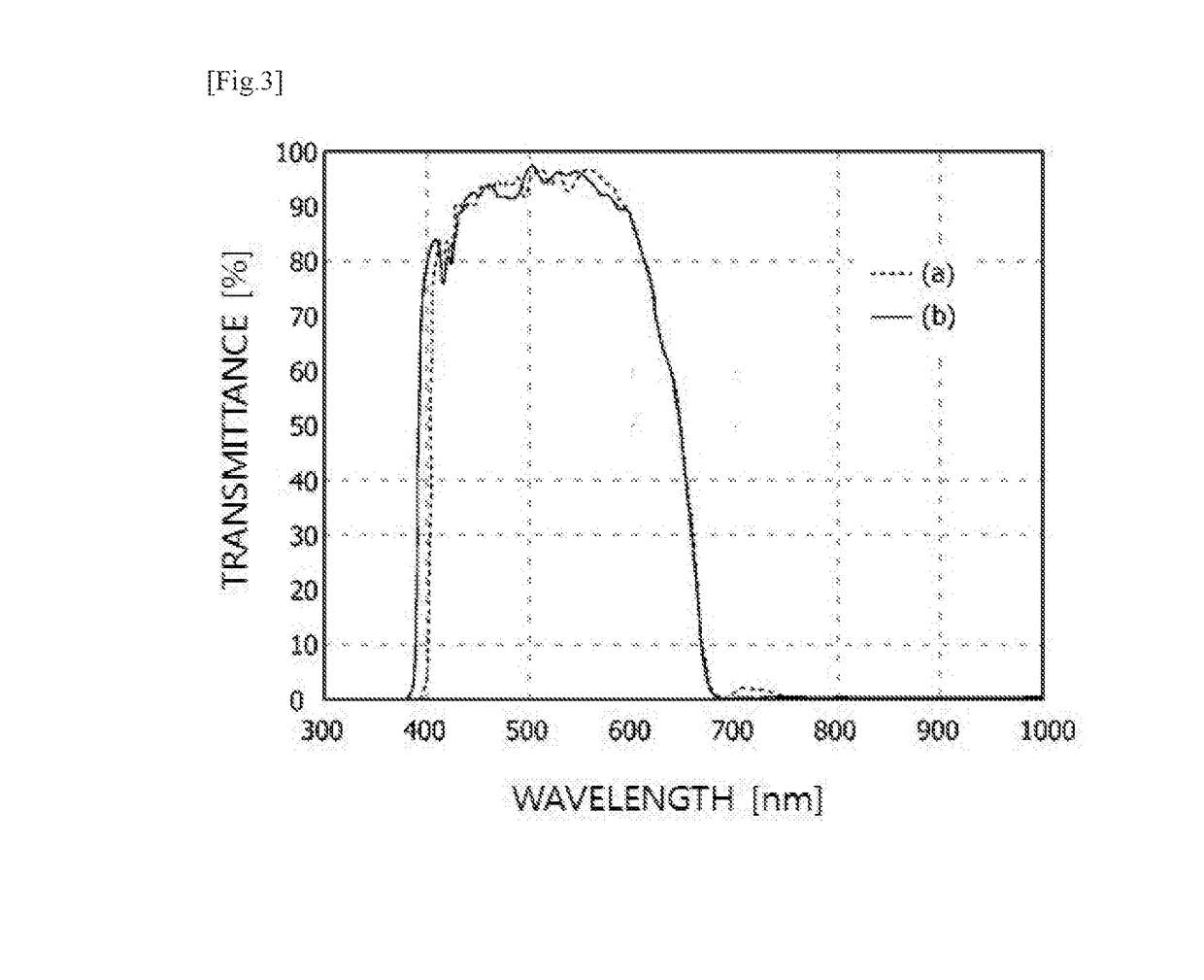Optical filter and imaging device comprising same
a technology of optical filters and imaging devices, applied in camera filters, television systems, instruments, etc., can solve problems such as image distortion, and achieve the effect of preventing a shift in the transmission spectrum and hindering the transmission in the visible region
- Summary
- Abstract
- Description
- Claims
- Application Information
AI Technical Summary
Benefits of technology
Problems solved by technology
Method used
Image
Examples
example 1
Preparative Example 1
[0080]TiO2 and SiO2 were alternately deposited on one surface of a glass substrate using an E-beam evaporator to form a near-infrared reflection layer.
[0081]Separately, a light absorbent, in which commercially available first and second light absorbents having maximum absorptions of 685 nm and 702 nm, respectively, were mixed at a weight ratio of 1:0.1, a cyclic olefin-based resin as a binder resin source, and toluene (commercially available from Sigma Aldrich) were mixed, and stirred for at least a day using a magnetic stirrer to prepare a solution for near-infrared absorption.
[0082]Next, the prepared solution for near-infrared absorption was spin-coated on the surface of the glass substrate opposite to the surface on which near-infrared reflection layer was formed to form a light absorption layer.
[0083]The optical filter according to one exemplary embodiment of the present invention was manufactured using the above-described method. A stacked structure of the ...
example 2
Preparative Example 2
[0085]An optical filter was manufactured in the same manner as in Preparative Example 1, except that a first light absorbent and a second light absorbent were mixed at a weight ratio of 1:0.3 and the resulting mixture was used as the light absorbent included in the light absorption layer.
[0086]A light transmittance test was carried out on the optical filter manufactured in this Preparative Example 2 at different angles of incidence of light of (a) 0° and (b) 30°. The results are shown in FIG. 3.
example 3
Preparative Example 3
[0087]An optical filter was manufactured in the same manner as in Preparative Example 1, except that a first light absorbent and a second light absorbent were mixed at a weight ratio of 1:0.6 and the resulting mixture was used as the light absorbent included in the light absorption layer.
[0088]A light transmittance test was carried out on the optical filter manufactured in this Preparative Example 3 at different angles of incidence of light of (a) 0° and (b) 30°. The results are shown in FIG. 4.
PUM
 Login to View More
Login to View More Abstract
Description
Claims
Application Information
 Login to View More
Login to View More - R&D
- Intellectual Property
- Life Sciences
- Materials
- Tech Scout
- Unparalleled Data Quality
- Higher Quality Content
- 60% Fewer Hallucinations
Browse by: Latest US Patents, China's latest patents, Technical Efficacy Thesaurus, Application Domain, Technology Topic, Popular Technical Reports.
© 2025 PatSnap. All rights reserved.Legal|Privacy policy|Modern Slavery Act Transparency Statement|Sitemap|About US| Contact US: help@patsnap.com



